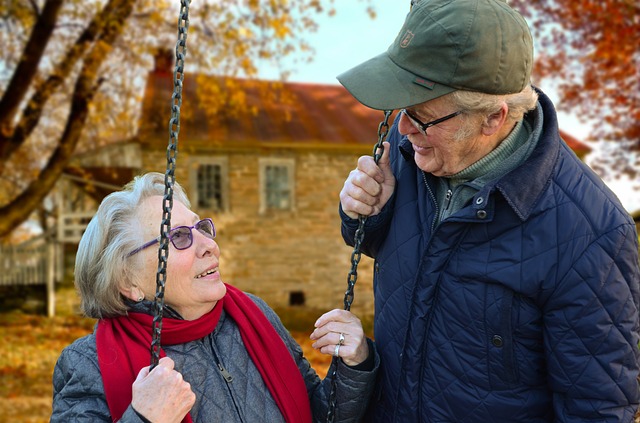Disclaimer: This page may contain affiliate links. We may earn a small commission for purchases made through links in this post, at no extra cost to you.
Multiple Sclerosis Facts

Common facts about MS
These multiple sclerosis facts help show how MS affects millions of people worldwide. On nearly every continent, within every race, and in every socio-economic status, multiple sclerosis has shown up in one way or another.
Through research, studies, and historical records, compiled over the years, doctors and scientists have come up with these facts and figures. Even so, this list will constantly change and grow as we learn new things about MS everyday.
A List of
Multiple Sclerosis Facts
History
- First Diagnosed in 1849
- The earliest known description of a person with possible Multiple Sclerosis dates back to 14th century, Holland
- Multiple sclerosis was first identified and described by a French neurologist, Dr. Jean-Martin Charcot, in 1868
- First written record of someone with MS was Augustus Frederick d'Este (1794–1848), grandson of King George III of Great Britain

Who gets it?
- Multiple Sclerosis is the most common, progressive, and disabling, neurological condition in young adults
- Multiple Sclerosis affects women much more frequently than men. Approx. 1.7 – 2:1 in the US and approx. 3:2 in the UK
- The ratio of white to non-white is approx. 2:1
- Gypsies and Inuit's do get Multiple Sclerosis although the incidence rate is much lower than other populations at approx. 19 per 100,000
- Native Indians of North and South America, Japanese and other Asian people have a very low incidence of Multiple Sclerosis
- About 8,000 to 10,000 children under 18 live with MS
- A few people as old as 75 have developed MS
What is it?
- Sclerosis is Greek meaning hardening of tissue or scars, multiple means many
- Some scientists feel that MS is autoimmune, meaning the body attacks itself
- Others feel that MS is immune mediated because the specific target of the immune attack has yet to be identified
- MS damages the CNS, specifically the myelin sheath, the protective coating around the nerves
- MS is a progressive disease with no cure
- MS is not contagious
- MS is not predictable from one person to the next
- There are four basic types of MS - relapsing-remitting (RRMS) - 85% frequency, secondary-progressive (SPMS) - frequency depends on early treatment or therapy, progressive-relapsing (PRMS) - 5% frequency, and primary-progressive (PPMS) - 10% frequency
- 10% of patients may experience benign multiple sclerosis, with mostly invisible symptoms
- Without some type of therapy or treatment, 50% of patients diagnosed with RRMS will progress in 10 yrs
- Without some type of therapy or treatment, 1/3 with RRMS will need a wheelchair in about 20 yrs
- 2/3 of people with MS will still be able to walk, however they may need some type of mobility aid
Is it genetic?

- In identical twins where one twin develops the disease, the likelihood of the second twin developing Multiple Sclerosis is approx. 30%
- The incidence rate for non-identical twins, where one contracts Multiple Sclerosis, is approx. 4%
- The risk of contracting Multiple Sclerosis if a first-degree relative (father, mother, sibling) has the disease, is approx. 1% - 3% overall
- The risk of contracting Multiple Sclerosis if your father has the disease is approx. 1 in 100
- The risk of contracting Multiple Sclerosis if your mother has the disease is approx. 1 in 50
- The risk among the general population of contracting Multiple Sclerosis is approx. 1 in 800
Where?

- Approx. 2.5 million people worldwide, have Multiple Sclerosis
- Around 400,000 people in the United States have Multiple Sclerosis
- Approx. 200 people are diagnosed with MS every week in the United States
- There are approx. 25,000 new cases of MS every year
- In the UK, approx. 70,000 people have the disease
- Approx. 50,000 people in Canada have Multiple Sclerosis
- Scotland has the highest incidence of Multiple Sclerosis per head of population in the world
- In Scotland, over 10,500 people have Multiple Sclerosis
- Multiple Sclerosis is five times more prevalent in temperate climates than in tropical climates
- Worldwide, MS occurs more frequently in higher latitudes (above 40° latitude) away from the equator, than in lower latitudes, close to the equator.
Most Common Symptoms
- Fatigue, often extreme
- Vision problems
- Balance problems
- Problems walking
- Sensory problems like numbness, tingling, and pain
- Bladder problems
- Tremors
- Cognitive issues, including memory problems and mood changes
What causes it?
- No virus has ever been isolated as the cause of Multiple Sclerosis
When?
- Average age of clinical onset is 30 – 33 years of age
- The average age of diagnosis is 37 years of age
- Most people are diagnosed between the ages of 20 and 50 years of age
- The average time between clinical onset of MS and diagnosis by physicians is 4 - 5 years
- 10% of cases are diagnosed after the age of fifty
How long?

- In 1936, only 8% of patients were reported to survive beyond 20 years after onset of MS
- In 1961, over 80% of Multiple Sclerosis patients were reported surviving to 20 years after onset of illness
- Life expectancy with MS is normal or very near normal
- Manageable and preventable complications, like different kinds of infections can shorten a patients life
- A very rare form of MS can progress rapidly and can also shorten a patients life
- Because this is a chronic or long-term condition, it has become the 2nd most expensive disease to treat and live with costing people with MS on average $70,000 over the course of their lives
More multiple sclerosis facts?
As more and more research is done, in both the traditional and nutritional arenas, this list of multiple sclerosis facts and figures will continue to grow and change.
Hopefully, with each new development, we will come closer to adding one more.
Multiple Sclerosis - cured in the year .......
Go from Multiple Sclerosis Facts to the MS Blog.
Dear Friends,
"Life in Spite of MS is a participant in the Amazon Services LLC Associates Program, an affiliate advertising program designed to provide a means for sites to earn advertising fees by advertising and linking to Amazon.com. We're also part of the Ebay Partner Network, another affiliate program."
We'd also like you to know it doesn't cost one cent more when you click through the links here on our blog. Not one single penny. And we will make a little extra cash when you do click through. We'll be ever so appreciative. You also have our word that we'll only link to things that we would use ourselves, (or wish we could have or use).
Sincerely,
Cir & Akrista
You are reading original content written by Akrista or Cir L'Bert of Life in Spite of MS. If you enjoyed reading this blog, please consider following us on Facebook, Twitter, Pinterest, and Instagram. See you there!
Privacy Policy ~ Advertising Policy ~ Disclaimer ~ Contact Us ~ About Us

New! Comments
Have your say about what you just read! Leave me a comment in the box below.